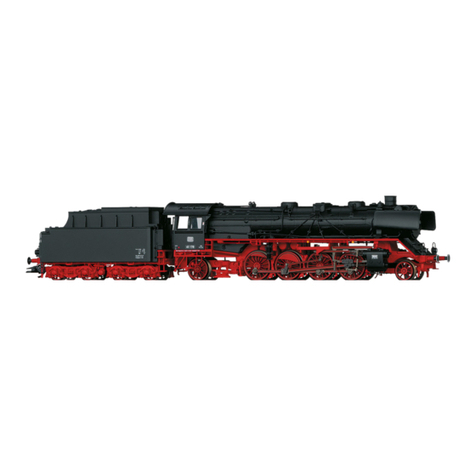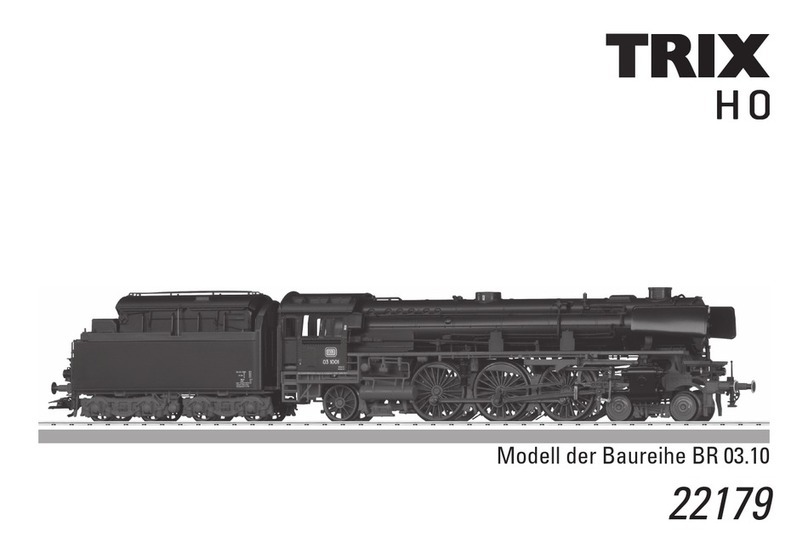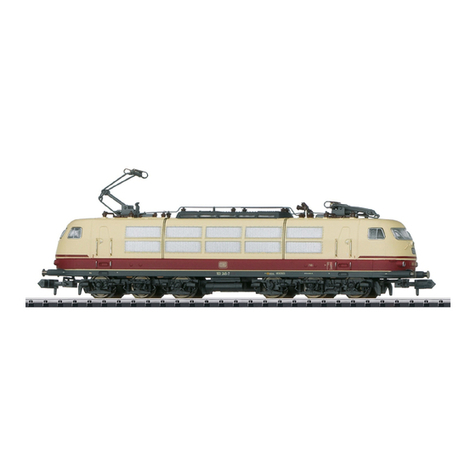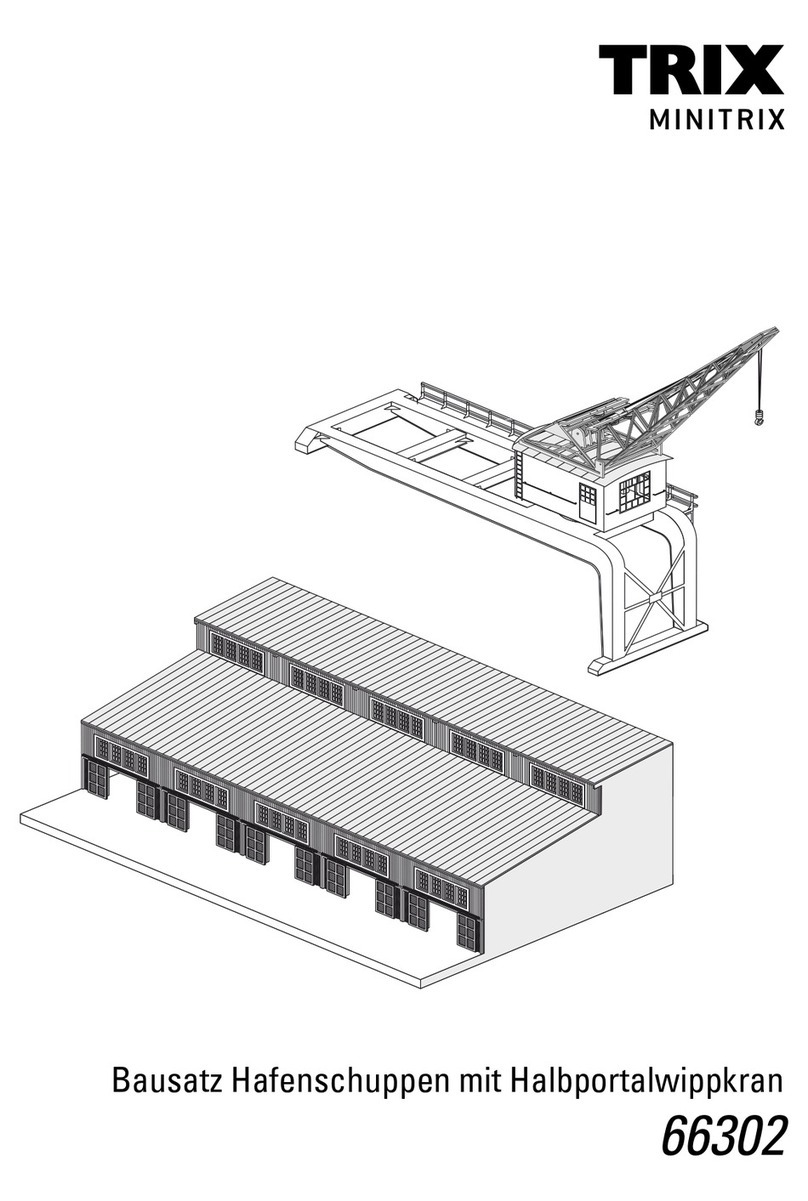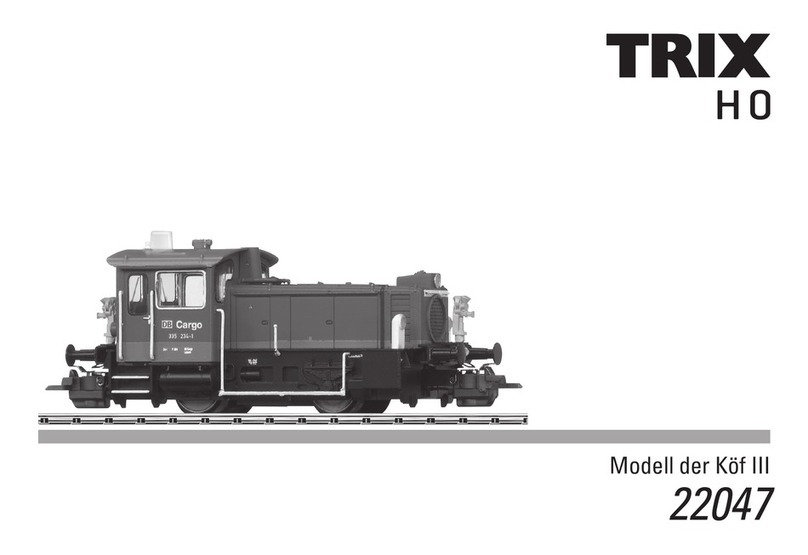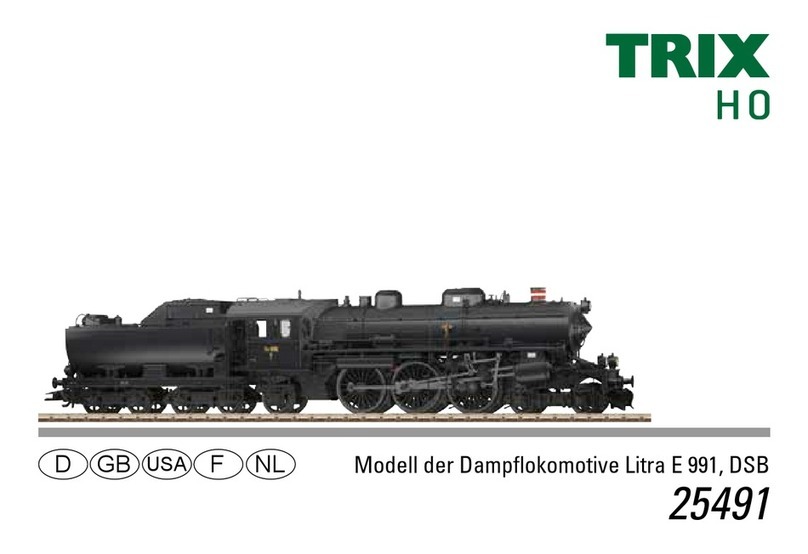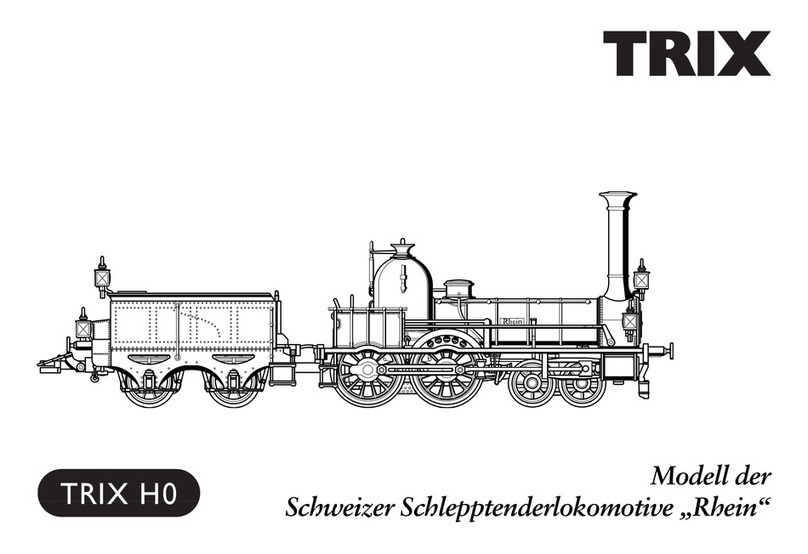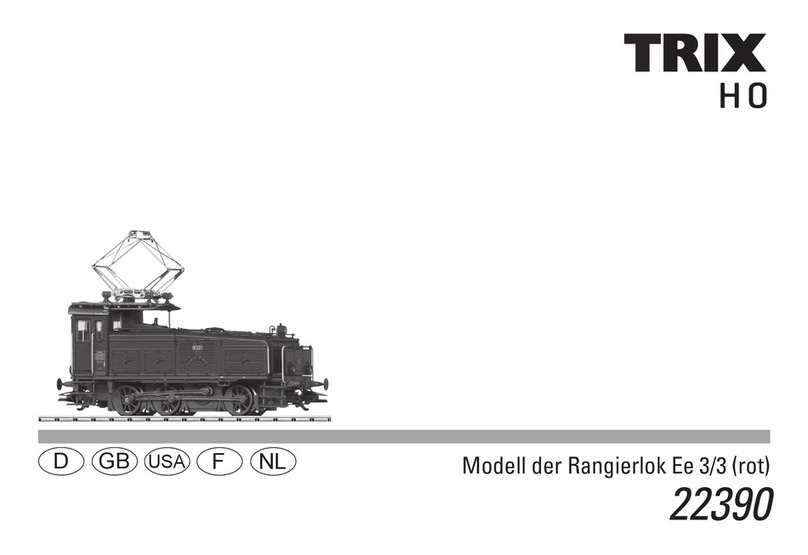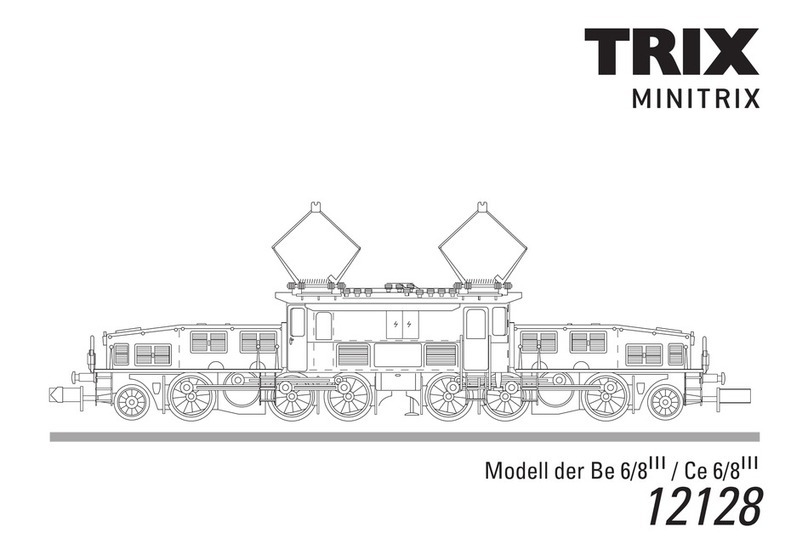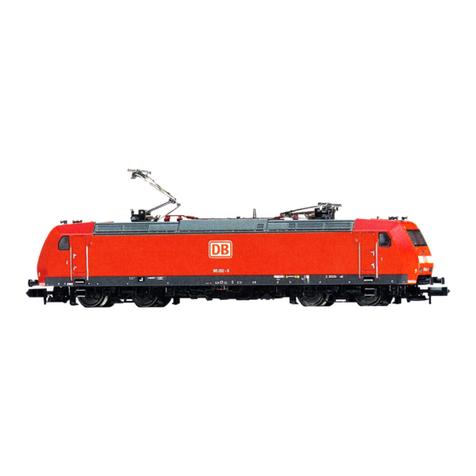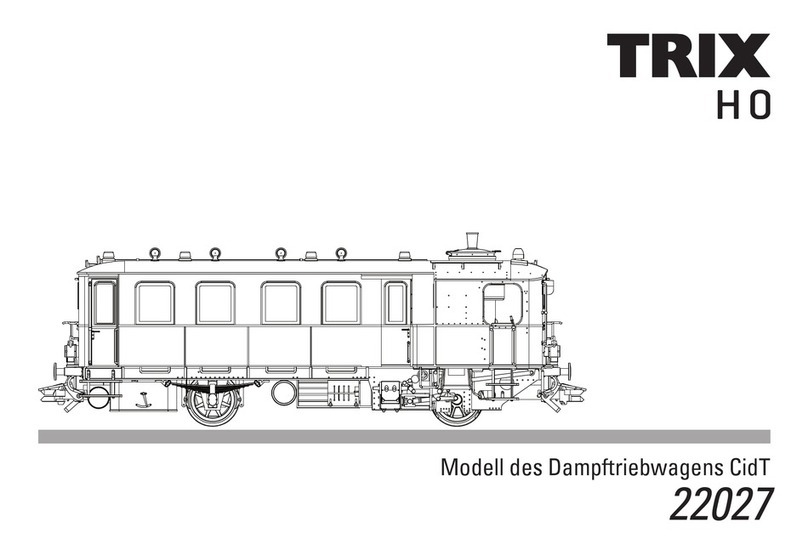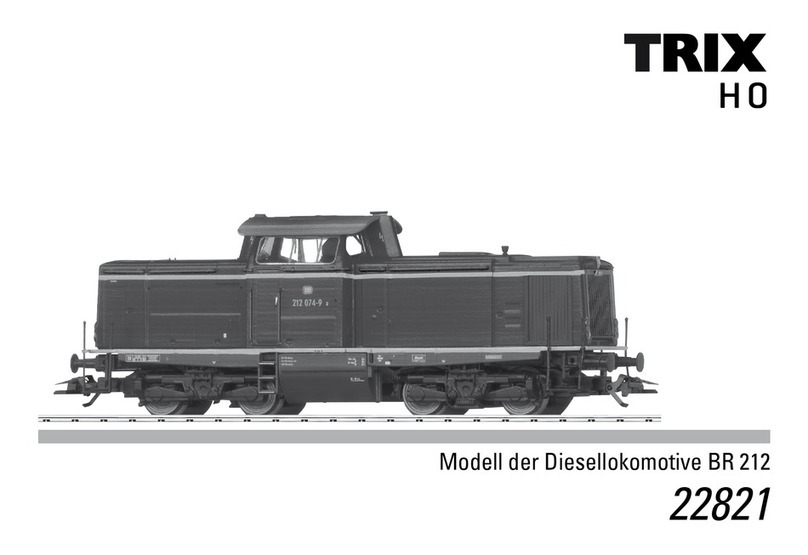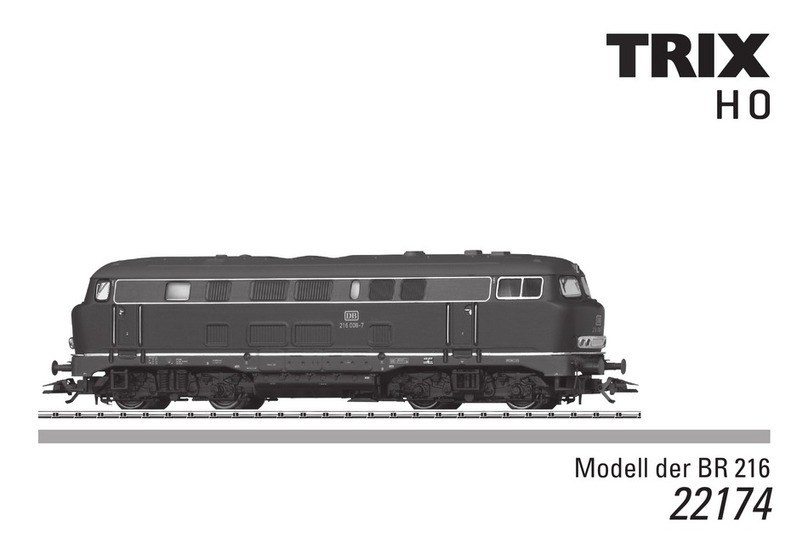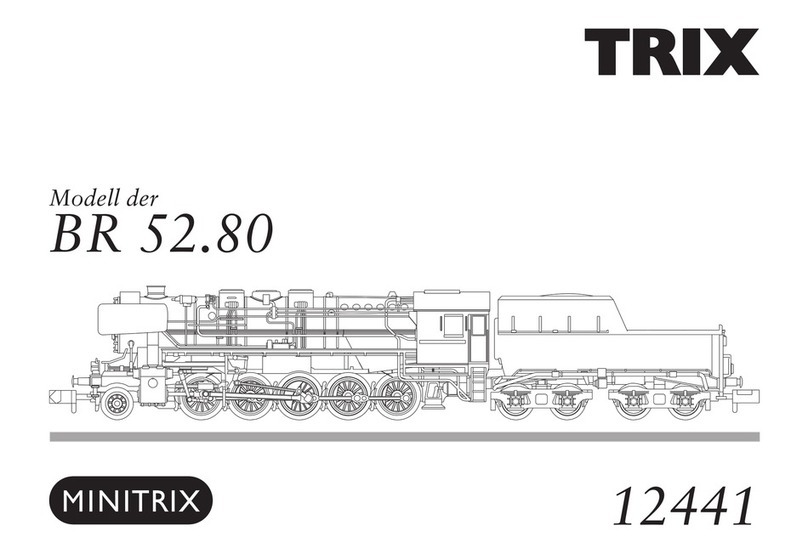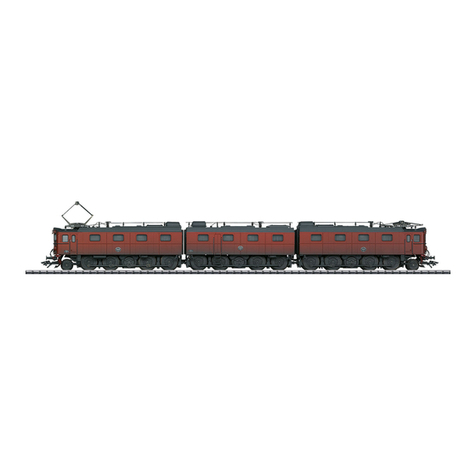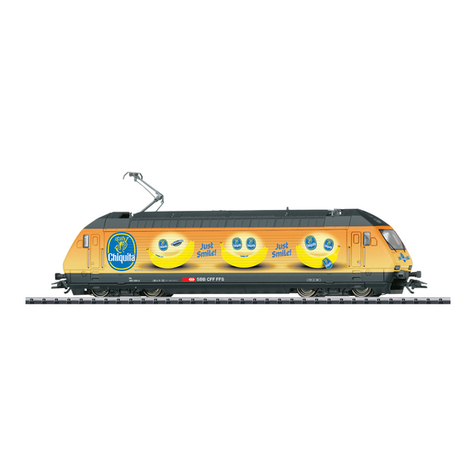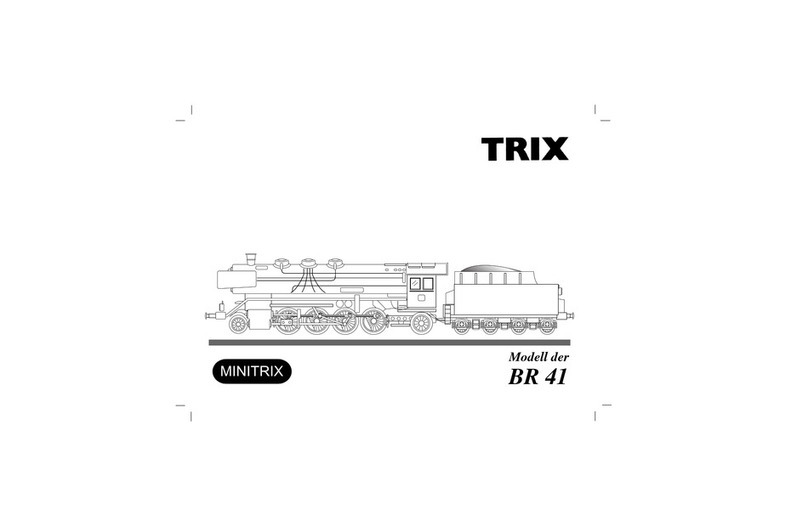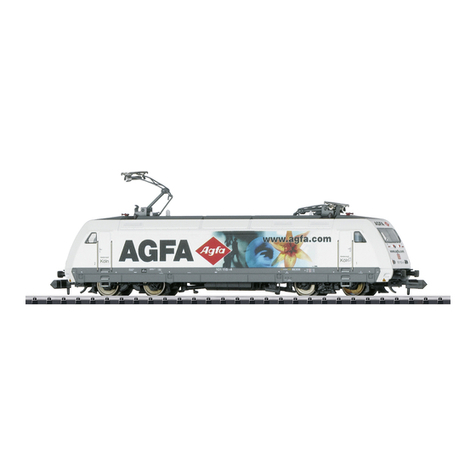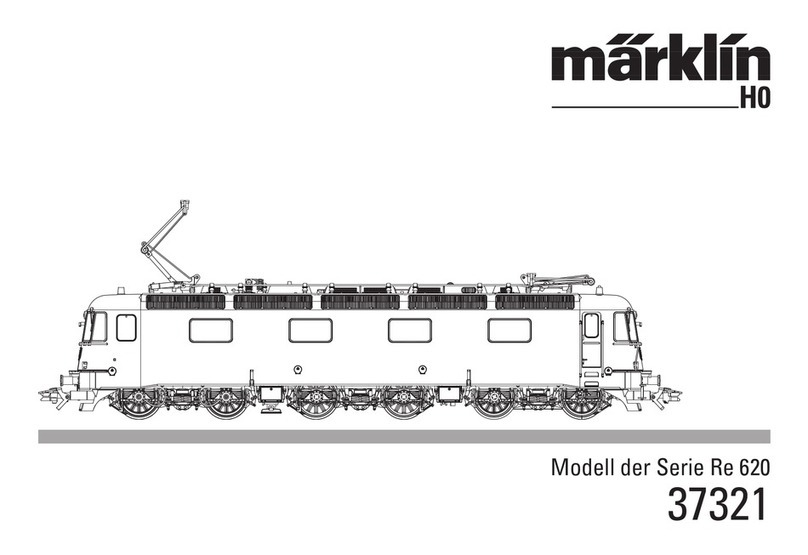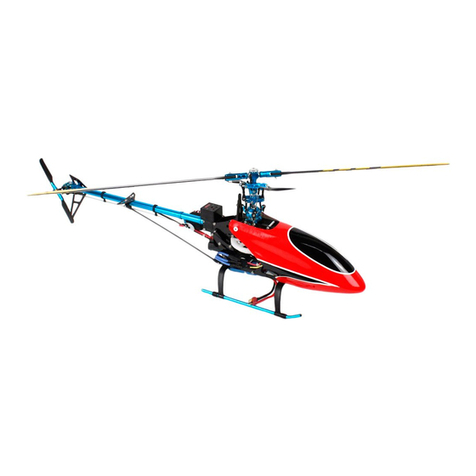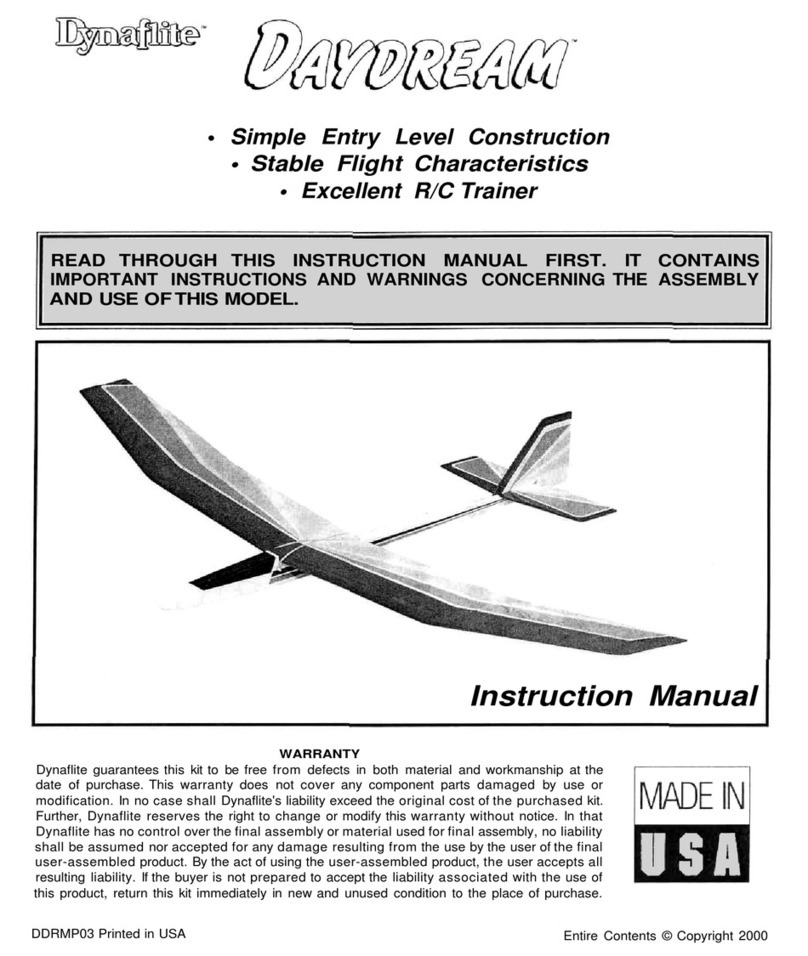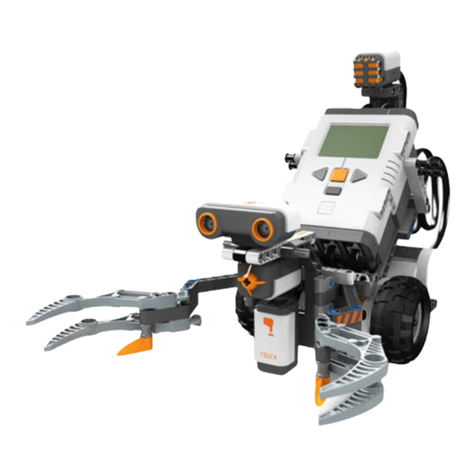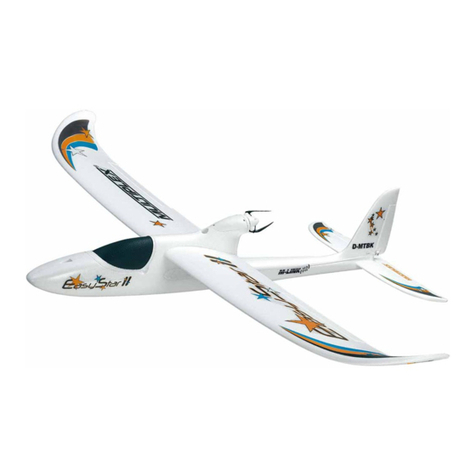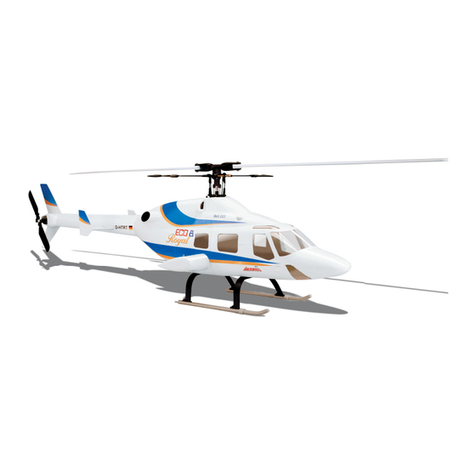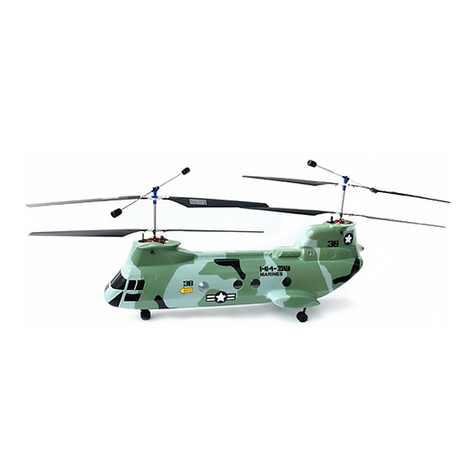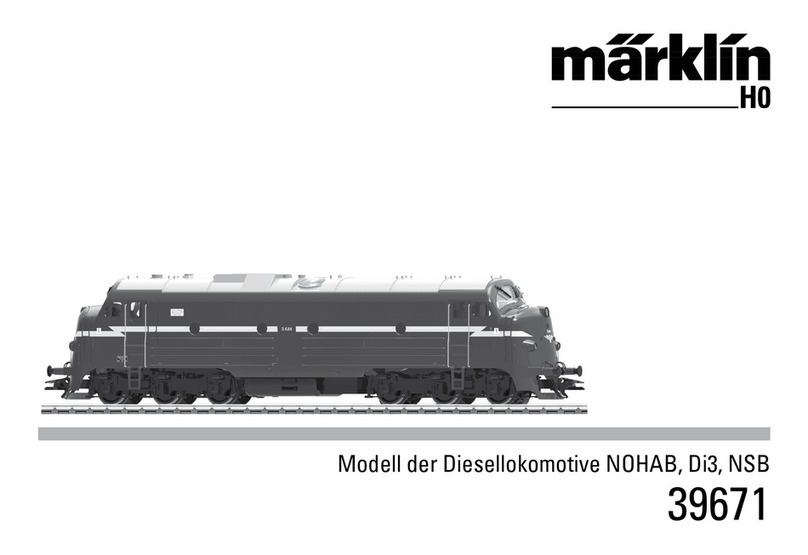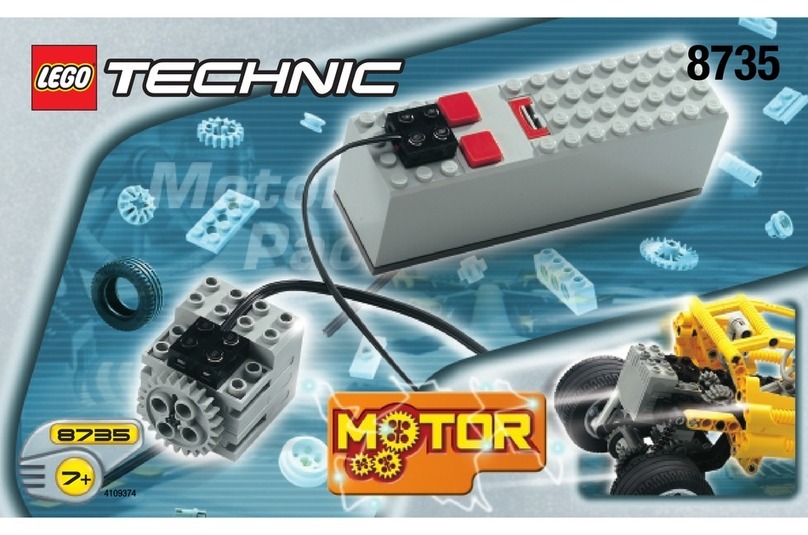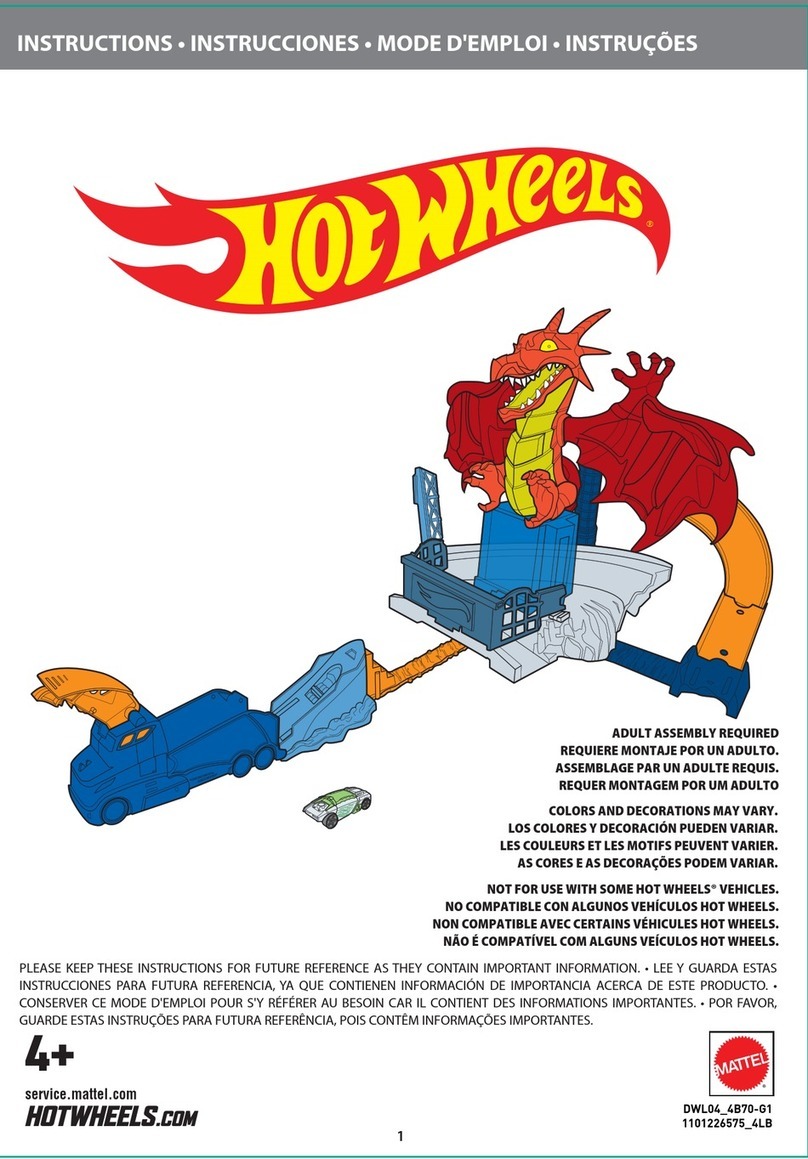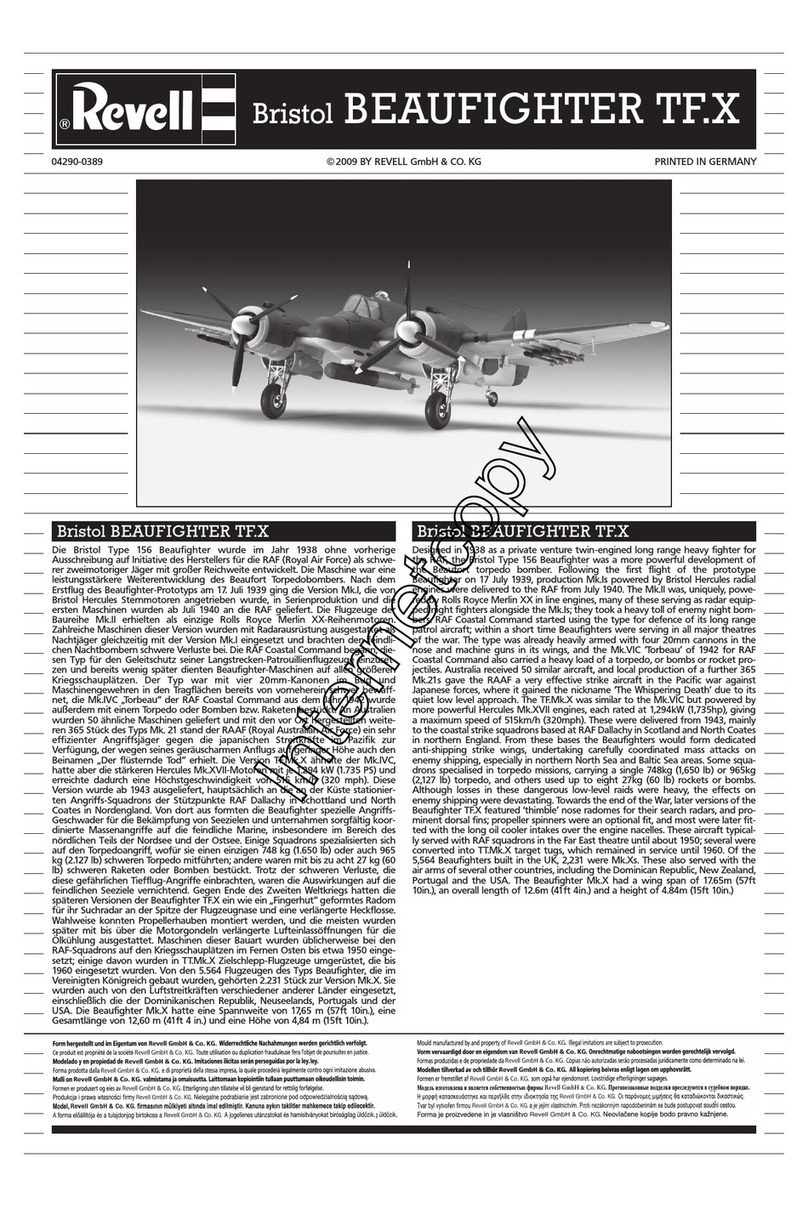
4
Informationen zum Vorbild
Zur Ablösung der seit fast vier Jahrzehnten stark beanspruchten
Diesellokomotiven der Baureihe 218 begann die Deutsche Bahn
schon vor einigen Jahren, nach geeignetem Ersatz zu suchen.
Die neuen Loks sollten in der Lage sein, mittelschwere Regio-
nalpersonen- und Güterzüge problemlos zu befördern. Fündig
wurde die DB schließlich bei Bombardier, welche die aus der
Traxx-Familie stammende, einmotorige Diesellokbaureihe 246 im
Angebot führte. Diese dieselelektrische Maschine hat sich schon
seit einigen Jahren vor den Metronom-Doppelstockzügen zwi-
schen Hamburg und Cuxhaven ausgezeichnet bewährt. Neue Ab-
gasnormen machten jedoch eine Weiterproduktion der Baureihe
246 schwierig. Daher schlug Bombardier einen anderen Weg ein:
Statt eines großen, für die Abgasnormen noch zu modifizierenden
Dieselmotors, erhielten die knapp 19 Meter langen und 83 Tonnen
schweren Loks vier einzelne, kleinere Dieselmotoren, welche die
neuen EU-Abgasnormen Stage III B erfüllen.
Von dieser Variante überzeugt, schloss nun die DB mit Bom-
bardier einen Rahmenvertrag über die Lieferung von insgesamt
200 Loks der neuen Baureihe 245. Nach erfolgreichen Probe-
fahrtenmitdemPrototypen245001bestelltedieDB-Regiosogleich
20 Maschinen für die Regionalbereiche Frankfurt/Main, Mühl-
dorf und Kempten. Die 160 km/h schnellen Loks werden von vier
Sechszylinder-Dieselmotoren des Typs Caterpillar CAT C18 mit
einer Gesamtleistung von 2.252 kW (3.062 PS) angetrieben und
bestechen durch ihre Beschleunigung. Sieben weitere 245er be-
stellte die DB Fernverkehrssparte am 10. Juni 2014 zur Ablösung
der Baureihe 218 bei den Sylt-Shuttles, wobei jeweils eine einzel-
ne 245 eine 218-Doppeltraktion ersetzen wird.
Information about the prototype
The German Railroad began several years ago to search for a sui-
table replacement for the class 218 diesel locomotives that had
been greatly burdened for almost four decades. The new loco-
motives had to be in a position to haul medium heavy regional
passenger and freight trains without problem. The DB was finally
successful with Bombardier, which was offering the class 246
single-motor diesel locomotive class developed from the Traxx
family. This diesel electric unit had turned in excellent results for
several years pulling Metronom bi-level trains between Hamburg
and Cuxhaven. New exhaust regulations made it difficult to build
any more of the class 246. Bombardier therefore hit upon another
path. Instead of a large diesel motor, that still had to be modified
for the exhaust regulations, the just 19 meter / 62 feet 4 inches
long and 83 ton locomotives were equipped with four individual,
smaller diesel motors that met the new EU exhaust regulations
Stage III B.
Convinced of the virtues of this variant, the DB now concluded
a framework agreement with Bombardier for delivery of 200 of
the new class 245 locomotives. After successful test runs with
the prototype road number 245 001, the DB-Regio immediately
ordered 20 units for the regional areas of Frankfurt/Main, Mühl-
dorf, and Kempten. These locomotives can do 160 km/h / 100 mph
and they are powered by four six-cylinder Caterpillar CAT C18
diesel motors with a total output of 2,252 kilowatts / 3,062 horse-
power. They impress people with their acceleration. The DB long-
distance passenger service group ordered seven additional 245
units on June 10, 2014 to replace the class 218 the Sylt shuttles,
whereby a single 245 will replace two 218 units.
